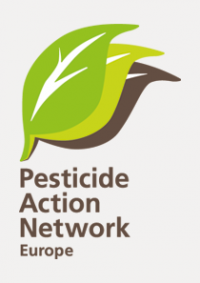European citizens have been exposed to a dramatic rise in the frequency and intensity of residues of the most toxic pesticides on fruits and vegetables sold in the EU. This report and its primary conclusion contradict official claims that toxic pesticide use is declining and expose a complete failure by Member States to implement EU Regulation and protect consumers.
This report examines not just the extent of contamination of fruits and vegetables produced in the EU, but, for the first time, patterns of contamination over time. Researchers analysed the results of a Europe-wide programme of government sampling large enough to be considered representative of general public exposure. This revealed a dramatic upward trend of fruits contaminated with the most hazardous category of pesticides between 2011 and 2019, the latest year for which their data was available for this paper. While kiwi fruits were almost free (4%) of these toxic substances ten years ago, almost a third (32%) are now contaminated. Likewise, half (50%) of all cherries sampled by officials were contaminated in 2019, compared to 22% in 2011. This increase in the frequency of contaminated fruits and vegetables sold to consumers goes hand in hand with an increase in the intensity of pesticides used, with ever greater use of combinations of chemical substances, substances that are supposed to be phased out in Europe. By 2019, half of the pears produced in Europe were contaminated with as many as 5 such substances, and this figure rises to 87% for pears grown in Belgium or 85% of Portuguese pears. Although scientists warn of growing evidence that such ‘chemical cocktails’ amplify human health impacts, such combinations are still not assessed by authorities, as required by the law[1].
This report focuses on the residues of a category of pesticides defined as “more hazardous” by the European Commission in the context of the EU Farm to Fork Strategy. These are in fact the single most dangerous and most heavily regulated category of pesticides, linked to a range of chronic diseases including cancers, cardiovascular problems or diabetes. They can also be highly toxic to the environment, poisoning rivers and other precious ecosystems[2]. The European regulation itself identifies them as the worst pesticides remaining on the EU market, i.e., the most hazardous pesticides which should be designated as such.
Under the 2020 EU Farm to Fork Strategy, the use of these pesticides should be halved by 2030 in the EU. The European Commission already claims a 12% reduction in 2019 compared to 2015-2017. However, this report, which provides evidence of the quantity of pesticides that actually end up in food, is a strong rebuttal to that claim: in 2019, the proportion of fruit and vegetables contaminated with the most hazardous pesticides increased by 8.8% compared to 2015-2017. The use of the most dangerous pesticides in Europe is in fact rising, not falling. Laws are being ignored and consumers are being exposed to a rising tide of chemical exposure. Europe is clearly moving away, not towards more sustainable agriculture. While authorities content themselves with unreliable indicators of progress, the observable pesticide residues, their impact on human health and rapidly declining wildlife populations tell the real story.
The analysis starts in 2011 when the use of these most hazardous pesticides should by law have started to decrease significantly. Indeed, these most dangerous substances belong to a group called ‘Candidates for Substitution’, defined in Regulation (EC) No. 1107/2009. In view of the very high concern for human health and the environment, Member States are legally obliged to substitute these ‘Candidates for Substitution’ in pesticides with safer alternatives, since 2011. This rule must have been applied whenever possible to ensure a gradual sectoral and geographical phase-out of these pesticides. By highlighting instead a spectacular upward trend over the last 10 years, this report further confirms the complete failure of Member States to implement substitution, at the expense of consumer health and the environment.
The report shows that this failure to implement substitution has led to an increase in plant and insect resistance to these most hazardous pesticides, leading in turn to an increased use of these substances year after year rather than to their phase-out. Unless a firm commitment is taken to substitute these substances with safer alternatives, in line with sustainable Integrated Pest Management, their use will continue to rise (along with further biological resistance).
Therefore, this report raises the alarm and calls for strong political action to genuinely put the EU food system on the track to sustainability. Namely, it calls for substitution of the most hazardous pesticides by Member States, the adoption of binding reduction targets at Member State level and the reform of pesticide use indicators.
Notes:
[1] Article 4(3)(b) of Regulation (EC) No. 1107/2009 and Article 14 of Regulation (EC) No. 396/2005.
[2] Annex II point 4 of Regulation (EC) No 1107/2009.
